the distance between degrees began when I found a small black-and-white surveillance monitor in a Toronto ally. It immediately reminded me of an etch-a-sketch. It was similar in size and somehow had the same shining surface. When combined with a discarded restaurant table, an old sewing machine pedal and woven together with some custom software the screen and sketch became a simultaneous virtual and physical drawing machine.
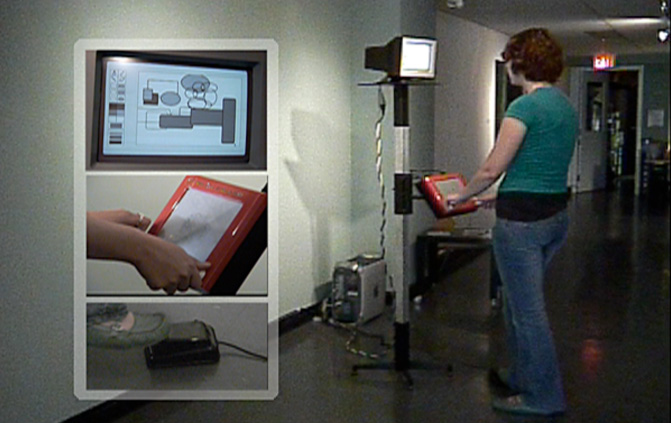
the distance v1.0, @ OCAD Gallery
the distance between degrees juxtaposes the relentless scratching of an etch-a-sketch stylus with the apparent fluidity of digital drawing software in an effort to interrogate the boundary between physical and virtual space. My expectation was that the scribed lines on the etch-a-sketch screen would act as a window to the various ways that our passage into and out of virtual space is controlled by assumptions embedded in interface design.
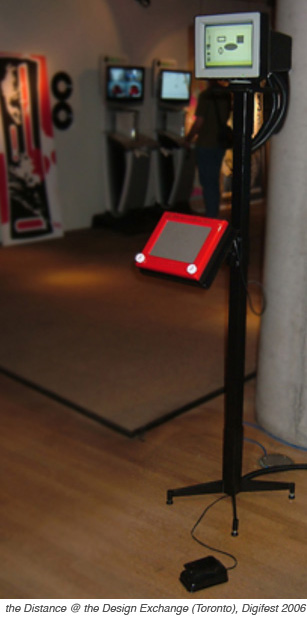
When you engage the distance as a participant and create in virtual space, the system maps your actions in physical space. While the digital interface makes your physical actions disappear by eliminating the correspondences and contextual links between real world cause and virtual effect, the etch-a-sketch, with its continuous simplified line, reveals the invisible but real path traveled by the input device. The resulting sketch is a data rich topology of each and every one of your personal choices. The representational difference between your virtual drawing and the distance's physical sketch is a manifestation of your movement between these apparently disperate worlds.
While the anticipated relationship is exposed by the system, the persistence of the etch-a-sketch's stylus also reveals an additional, though far less obvious layer of entanglement. In developing this piece I came to realize something so inherent it was unexpected. In systems where spatial relationships between virtual and material space are to be constructed (i.e. sensory or tracking systems, robotic systems that incorporate telemetry or positioning, printing documents) a second layer of dislocation is needed. Added to the layer of discordance described above that permits, among other things, the ability to pass undetected through virtual space must be a second layer of temporary disjunction that permits users to circumvent the connections between the material and virtual, allowing one to also pass through physical space undetected. These departures permit users to realign the intended mappings between the material and virtual.
The distance between virtual space and its physical anchor is more hybridized and interwoven than often postulated; the hypothetical boundary is in flux. Our perception of digital space as fluid and detached is not a simple manifestation of the assumed polarity of these realms but rather appears, at least partially, dependant on the virtuals contingent relationship to the material. The expectant computer awaits not just instructions but gentle nudges, physical corrections that maintain the illusion of flow and continuity in virtual space.
[DOWNLOAD original artist statement]
Video
Silent video documentation of the difference between degree shot at the OCAD student gallery.
Physical Interface Development
My primary goal in developing the physical elements of this system was to maintain the original user experience of an etch-a-sketch while still permitting all user actions to be mapped to an emulation of early digital "paint" programs. This meant retaining the cable based driving mechanism and the ability to shake the etch (upside-down) to clear both its screen and the Mac-paint emulation screen. I also needed to add a mouse button to facilitate user movement between physical and virtual spaces. I solved this problem with an old sewing machine pedal.
Etch movement were captured with a mechanical encoder and a dismantled linear actuator feedback mechanism. These inputs were filtered by a basic stamp and sent to the MAX/MSP based GUI.
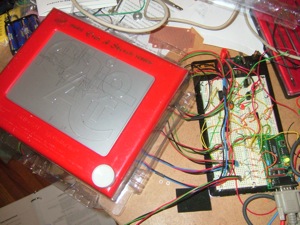
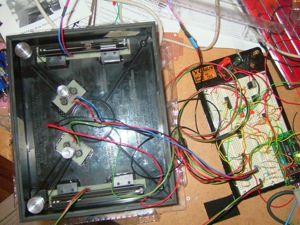
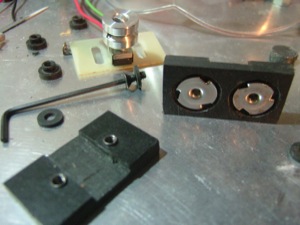
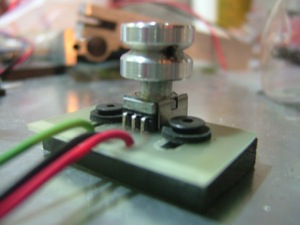
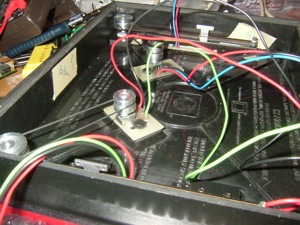
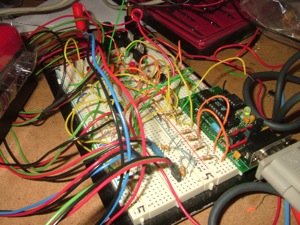
Graphical User Interface (GUI) Development
The GUI is an emulation of Mac-paint software that shipped with early Macintosh computers. I developed the GUI in MAX/MSP, as, at the time, it was the only language I knew that could talk to screens.

The Etch-a-sketch traces user movements, conflating virtual intention and interface affordance.
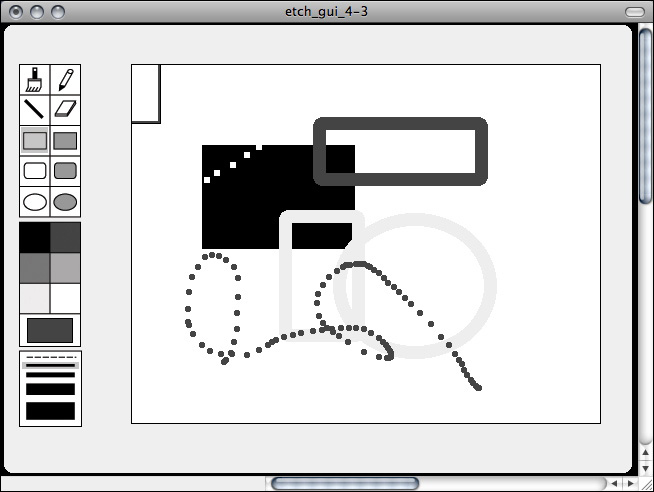
Screen shot of GUI.
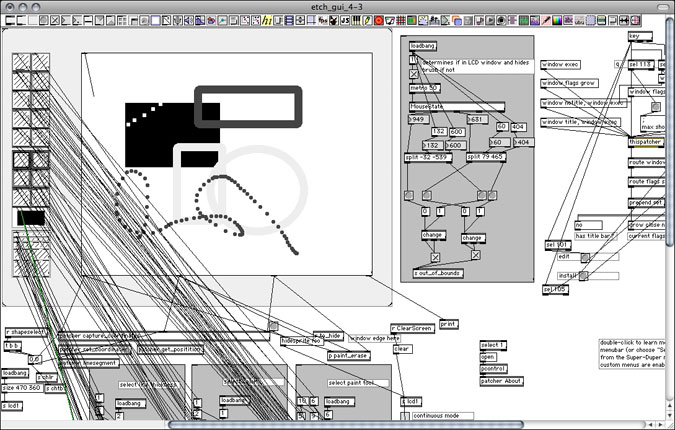
Unlocked GUI, showing a portion of the Max patch.
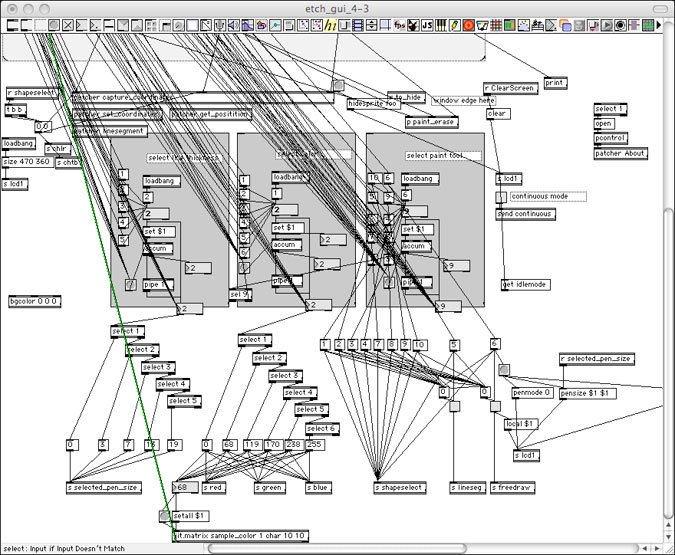
Unlocked Max patch.